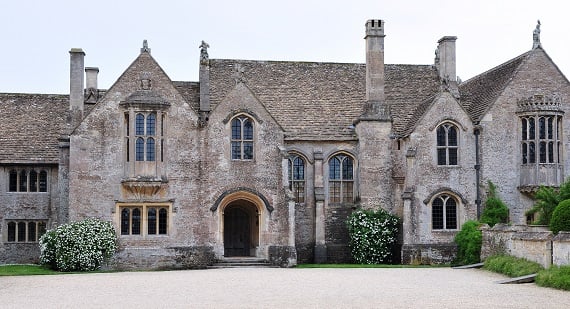Home and Property
Listed buildings: what you need to know

Historic buildings are central to the unique character of British towns and villages
The most treasured of these buildings are categorised as ‘listed’ and as such are protected from out of character alterations and demolition. If you own, or hope to own, a listed property, you’ll need to be aware of the rules and regulations that surround them.
Listed building grades
England
The National Heritage List for England (NHLE) contains details of all listed buildings in England. The exact number of listed buildings is not known, however NHLE estimate that there are around 500,000 listed buildings in England.
Historic England grade listed buildings as follows:
- Grade I - buildings are of exceptional interest. Only 2.5% of listed buildings are Grade I.
- Grade II* - buildings are particularly important and of more than special interest. 5.8% of listed buildings are Grade II*.
- Grade II – buildings are of special interest. 91.7% of all listed buildings are in this class and it is the most likely grade of listing for a home owner.
Scotland
Listed buildings in Scotland are put into one of three listing categories by Historic Environment Scotland according to their relative importance.
- Category A - buildings of special architectural or historical interest which are outstanding examples of a particular period, style or building type.
- Category B - buildings of special architectural or historic interest which are major examples of a particular period, style or building type.
- Category C - buildings of special architectural or historic interest which are representative examples of a period, style or building type.
Wales
In Wales there are over 30,000 buildings and structures on the list of Buildings of Special Architectural or Historic Interest.
The Historic Environment Service (Cadw) grade buildings based on their level of importance.
- Grade I - buildings are of exceptional interest.
- Grade II* - particularly important buildings of more than special interest.
- Grade II - buildings of special interest. These make up approximately 91% of the total number of listed buildings in Wales.
Renovating a listed building
If you want to undertake renovation work on a listed building, you need to contact your local council first. They will advise you on whether you are able to undertake the intended work. If you live in England, in some cases they may defer a decision to English Heritage, who have been in charge of the listing process since 2005.
You will require Listed Building Consent for all work to a listed building that involves alterations, extensions or demolition and will affect its character as a building of interest. As a general rule, alterations to a listed building will be permitted provided they do not lessen the building’s interest or appeal.
Changing the inside of a listed building
It’s important to remember that the listing of a building applies to the inside of a property as well as the exterior. Internal changes require permission in exactly the same way. Outbuildings, associated lands and even trees are also usually listed along with the property.
The installation of doors and windows, changes to fireplaces and removal of surfaces are all examples of internal work that will require prior consent. You’ll also need permission for common installations such as burglar alarms and television aerials.
Patience may be required
It often takes more than a couple of months for councils to consider and decide on planning applications, so it can be tempting to proceed without permission - especially in the case of smaller renovation tasks.
However, undertaking unauthorised work on a listed building is a criminal offence, and at best you’ll be made to undo all your work. It may not seem like it but waiting for the necessary permissions can actually save you time and money in the long run.
Respect your building’s heritage
Once you have received permission to undertake any required works on your building, it’s important to respect its materials and craftsmanship. In order to preserve what makes your listed building special, try to use traditional building materials that match the existing structures in order to maintain the character of your home.
You may require specialist advice and professional help in order to carry out suitable work to an older building. Attempting to make changes without appropriate guidance may seem like an easy way to save money, but in the long run this could result in additional costs.
Avoid the risk of underinsurance
The amount you pay and the level of cover you receive for your listed building will depend on your buildings sum insured. This is how much it would cost to rebuild or repair your home in the event of a buildings insurance claim.
When calculating your buildings sum insured, it isn't solely the cost of materials. You should consider the types and ease with which these materials could be sourced and the degree of craftmanship that would be required to restore your listed building to it's previous condition. These are likely to be greater for listed buildings compared to more standard constructions.
You should also factor in the requirement for an extended reinstatement period due to the need for consultation with planners and heritage officers throughout the claims process.
Get professional advice
With all of these considerations to take into account when owning and insuring a listed building, specialist advice from a professional can help make sure you have taken the right measures - especially your insurance.
Our Agents can help make sure you have the right cover in place. We can provide access to surveyors and our valuation partners to help you ensure your property is suitably protected, allowing you to enjoy living in your own piece of history with peace of mind.
